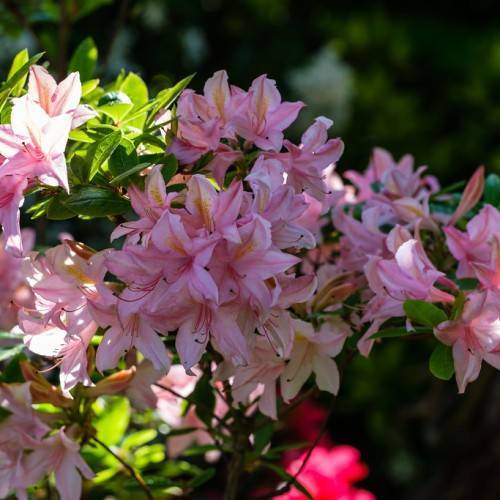
deciduous azalea
Rhododendron 'Mount Saint Helens'
Cycle:
Perennial
Watering:
Average
Hardiness Zone:
4 - 8
Flowers:
Flowers In Spring
Sun:
Part shade
Leaf:
Yes
Growth Rate:
Low
Maintenance:
Moderate
Poisonous To Pets:
Yes
Care Level:
Medium
watering
When it comes to watering deciduous azaleas such as Rhododendron 'Mount Saint Helens', it is important to keep the soil evenly moist, but not waterlogged. Aim to keep the soil consistently moist by watering once or twice a week to 1 inch deep. During the growing season, reduce watering to once a week in summer when the temperature rises. During this time it’s important to keep a close eye on the soil as the hot, dry weather can cause it to dry out more quickly than normal. For optimal results, water the plant in the morning, allowing the foliage time to dry out in the sunlight and helping to prevent disease. On the other hand, during cooler months, increase the watering frequency as the soil will dry out more slowly than during the warmer months.
sunlight
Deciduous azalea, Rhododendron 'Mount Saint Helens', requires full sunlight for at least 5 hours per day, preferably in the morning or late afternoon when the sunlight is filtered and not too intense. This species is especially sensitive to excessive temperatures and requires a balance of sun and shade for optimal growth. Sunlight will help the stems become thicker and more dense which gives the plant a fuller, more sturdy look. Too much shade can lead to sparse, floppy foliage. To ensure optimal growth, this species should be planted in an area that gets full morning sun with partial shade for afternoon sun.
pruning
Deciduous azaleas (such as Rhododendron 'Mount Saint Helens') should be pruned once a year, in early spring – before new growth begins. The amount of pruning required is relatively minimal, and should include removing damaged or dead stems, reducing the size of the plant, and thinning the stems to improve air circulation. When pruning, it’s important to avoid cutting more than a third of the plant’s total growth since this can be damaging. It’s also important to remember to use sharp tools and cut above a bud, as this will help encourage healthy new growth.
